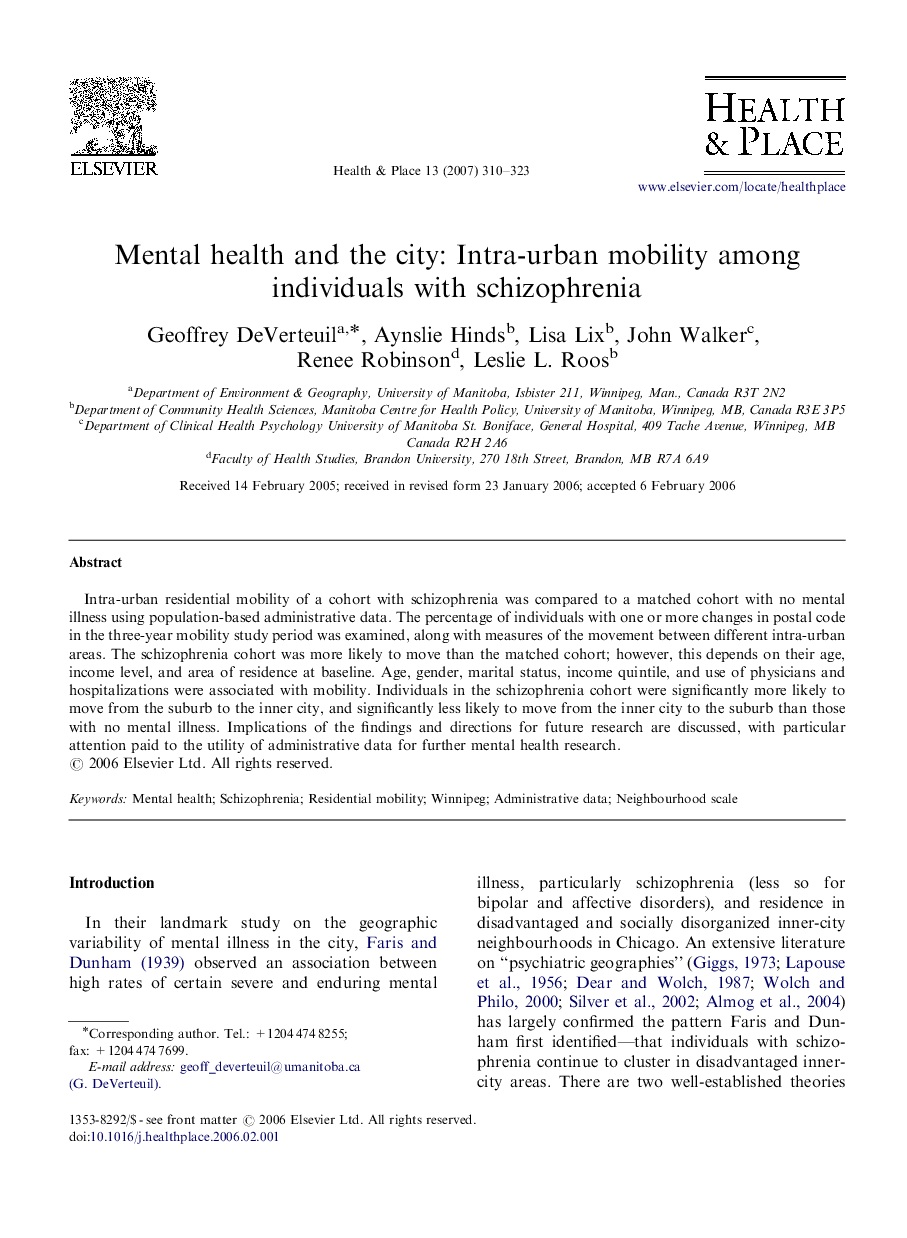| Article ID | Journal | Published Year | Pages | File Type |
|---|---|---|---|---|
| 1049025 | Health & Place | 2007 | 14 Pages |
Intra-urban residential mobility of a cohort with schizophrenia was compared to a matched cohort with no mental illness using population-based administrative data. The percentage of individuals with one or more changes in postal code in the three-year mobility study period was examined, along with measures of the movement between different intra-urban areas. The schizophrenia cohort was more likely to move than the matched cohort; however, this depends on their age, income level, and area of residence at baseline. Age, gender, marital status, income quintile, and use of physicians and hospitalizations were associated with mobility. Individuals in the schizophrenia cohort were significantly more likely to move from the suburb to the inner city, and significantly less likely to move from the inner city to the suburb than those with no mental illness. Implications of the findings and directions for future research are discussed, with particular attention paid to the utility of administrative data for further mental health research.
